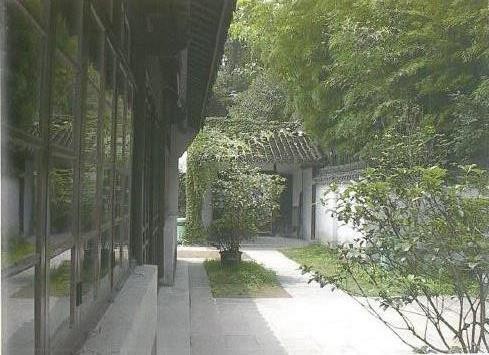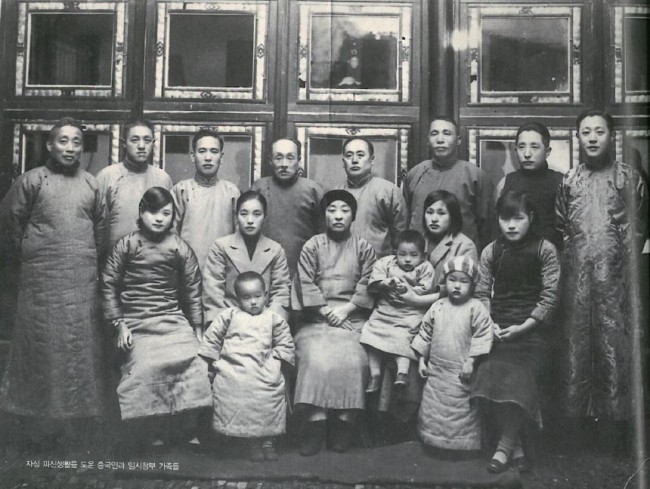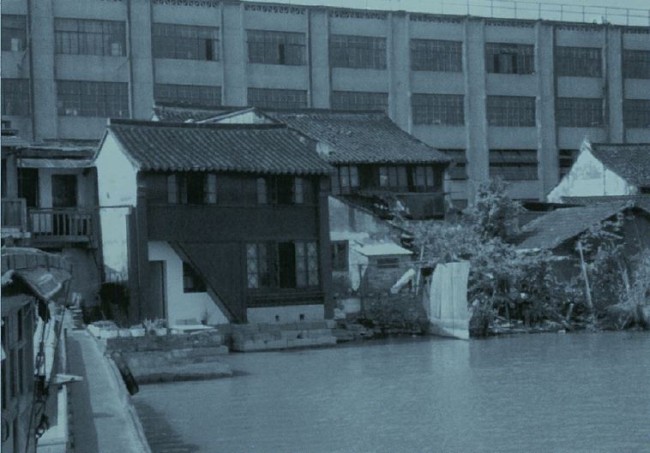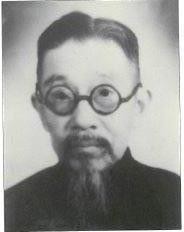[Foreigners Who Loved Korea] Symbol of Korean-Sino Amity and Cooperation, Chu Fucheng
By Korea HeraldPublished : Feb. 9, 2017 - 13:56
President Park Geun-hye, who participated in the G-20 summit in Hangzhou, China, had a Korean-Sino summit with president of China, Xi Jinping in September. The meeting of the two leaders provided an opportunity to gauge the state of relations between the two countries made awkward by Korea’s decision to deploy a Terminal High Altitude Area Defense missile system. President Xi’s opening statements mentioned the Korean provisional government’s (hereafter KPG) exile in China and Kim Koo’s struggle against the Japanese in the meeting.
A figure highlighted anew
When president Xi Jinping and Kim Sin, Kim Koo’s son and former chief of staff of Korea’s Air Force, paid a visit to Haiyan near Hangzhou in June 1996, president Xi introduced Kim Sin with the passage “When drinking water, think about whence it came / Korean-Sino Friendship” from the commemorative stele from Kim Koo’s place of refuge, Zaiqing Villa. The phrase meant that one should not forget about the foundation of Korean-Sino friendship.
Xi is known for taking a great interest and his knowledge of the Korean independence movement in Shanghai, Hangzhou, and other areas during the period of Japanese aggression during his tenure as governor of Zhejiang Province and party chief of Shanghai from 2002-2007.
The recent nuclear tests by North Korea and the countermeasures in response have heightened regional conflicts in Northeast Asia and even shown signs of a “New Cold War.” Xi’s emphasis of “Chinese support for the Korean independence movement,” during this period of troubled relations, expressed his dissatisfaction over the THAAD missile system deployment and hope for restoring relations in a distinct type of diplomatic language. The two historical figures that symbolize the “source of the water” of Korean-Sino friendship are the Korean Kim Koo and Chinese Chu Fucheng.
Chu was born on May 27, 1873 in Jiaxing, Zhejiang Province where he grew up. He went to Japan in 1904 and graduated from Toyo University’s high-level police administration course, and then studied abroad at Hosei University. He joined the Tongmenghui (Chinese United League) during this time, when Sun Yat-sen began leading the anti-Qing revolutionary movement. After his return to China, he became the head of the Zhejiang branch of the Tongmenghui, and launched women’s education in Jiaxing.
When Zhejiang province was retaken during the Xinhai Revolution, he became the head of civil administration in the military government, and was both deputy chairman and head of civil administration of the Zhejing provisional government during the Northern Expedition. He later founded Shanghai University Law School and served as its chairman and president for 21 years, and poured his efforts into building villages and towns and developing industry in order to promote local commerce and industry as Zhejiang’s chief representative minister. After the Second Sino-Japanese War, he represented Zhejiang Province in the National Parliament and organized the Democratic Party’s Jiusan Society. He died of illness in Shanghai on March 29, 1948.
A figure highlighted anew
When president Xi Jinping and Kim Sin, Kim Koo’s son and former chief of staff of Korea’s Air Force, paid a visit to Haiyan near Hangzhou in June 1996, president Xi introduced Kim Sin with the passage “When drinking water, think about whence it came / Korean-Sino Friendship” from the commemorative stele from Kim Koo’s place of refuge, Zaiqing Villa. The phrase meant that one should not forget about the foundation of Korean-Sino friendship.
Xi is known for taking a great interest and his knowledge of the Korean independence movement in Shanghai, Hangzhou, and other areas during the period of Japanese aggression during his tenure as governor of Zhejiang Province and party chief of Shanghai from 2002-2007.
The recent nuclear tests by North Korea and the countermeasures in response have heightened regional conflicts in Northeast Asia and even shown signs of a “New Cold War.” Xi’s emphasis of “Chinese support for the Korean independence movement,” during this period of troubled relations, expressed his dissatisfaction over the THAAD missile system deployment and hope for restoring relations in a distinct type of diplomatic language. The two historical figures that symbolize the “source of the water” of Korean-Sino friendship are the Korean Kim Koo and Chinese Chu Fucheng.
Chu was born on May 27, 1873 in Jiaxing, Zhejiang Province where he grew up. He went to Japan in 1904 and graduated from Toyo University’s high-level police administration course, and then studied abroad at Hosei University. He joined the Tongmenghui (Chinese United League) during this time, when Sun Yat-sen began leading the anti-Qing revolutionary movement. After his return to China, he became the head of the Zhejiang branch of the Tongmenghui, and launched women’s education in Jiaxing.
When Zhejiang province was retaken during the Xinhai Revolution, he became the head of civil administration in the military government, and was both deputy chairman and head of civil administration of the Zhejing provisional government during the Northern Expedition. He later founded Shanghai University Law School and served as its chairman and president for 21 years, and poured his efforts into building villages and towns and developing industry in order to promote local commerce and industry as Zhejiang’s chief representative minister. After the Second Sino-Japanese War, he represented Zhejiang Province in the National Parliament and organized the Democratic Party’s Jiusan Society. He died of illness in Shanghai on March 29, 1948.



Relationship with Korean independence activists
Chu was one of the iconic Chinese sponsors of the Korean independence movement. His first contact with colonial Korea was when the power of the March First Movement reached China and caused a great sensation there. When Jeong Anrip came from Jilin and appealed to the Chinese parliament’s aid in the issue of Korean independence, which had been ignored in the Paris Peace Conference, then Vice Chairman of the House of Representatives Chu, gave a sympathetic speech in Korea’s favor. Chu’s relationship with the Korean independence movement truly began after the Mukden Incident in 1931 and the Jan. 28 Incident in 1932, and he had especially deep ties with Kim Koo.
The Wanpaoshan Incident instigated by the Japanese in July 1931 and the Korean movement for the expulsion of Chinese in Korea worsened Chinese public opinion of Korea. The following Mukden and Jan. 28 incidents that broke out both presented a crisis and opportunity for the Korean independence forces in China. The KPG needed a new breakthrough, and the Korean Patriotic Corps under Kim Koo opened full-scale operations against the Japanese.
After the Japanese instigated the Jan. 28 Incident in 1932, they held a massive celebration for the Emperor’s birthday and over their victory for the Japanese troops stationed in Shanghai at Hongkou Park on April 29 that year. Yun Bonggil took this as an opportunity to throw a bomb onto the ceremonial podium, killing or severely wounding many elite Japanese personnel, including the president of the association of Japanese residents in Shanghai Kawabata Sadaji, Commander-in-Chief of the Shanghai Expeditionary Army General Yoshinori Shirakawa, and Vice Admiral of the 3rd Fleet Nomura Kichisaburo. As a result, Chinese public opinion became amicable towards Korea as Yun’s deed officially declared Korea’s desire for independence to the world. This also furnished a channel by which the Chinese Nationalist Party and Kim Koo could contact one another.


Evading crisis with help of Chu Fucheng family
When the Japanese indiscriminately began arresting and attacking Koreans in Shanghai after Yun’s deed, Kim Koo declared himself to be the mastermind of the act in order to protect them. As Japanese authorities offered a reward of 60,000 silver dollars to capture Kim Koo, Chiang Kai-shek ordered the Nationalist Party’s head of the Organization Department Chen Guofu to protect Kim. This job was given to the department’s Xiao Zheng, who then requested Chu Fucheng, a close party member and one of Jiaxing’s prominent figures, to carry out the job.
While acting as president of the Association of Support for the Northeast Volunteer Army, Chu brought Kim to his hometown of Jiaxing and furnished him with two residences for his protection. Kim took refuge in the house of Chu’s foster son, Chu Tongsun, and Rihuijiao No. 17 was made the residence for the leaders of the KPG and their families. After Yun’s deed, Kim hid in the house of Dr. S. A. Fitch, the executive secretary of the Foreigners’ YMCA. However, when he was discovered by a Japanese detective he moved to Hangzhou on May 14, 1932 where he attended the first meeting of the KPG’s Committee of State Affairs. Three days later, he moved to Jiaxing and stayed with Eom Hangseop and An Gonggeun at Chen Tongsun’s home on 76 Meiwan.
Kim Koo stayed on a boat in the lake with a young female boatman, Zhu Aibao, in order to evade raids from the Japanese. However, he needed a safe place of refuge when Japanese spies followed his trail all the way to Jiaxing. After agonizing over the problem, Chu had Kim take refuge in Haiyan, where the family of the wife of his eldest son, Chu Fengzhang, lived. Located a little over twenty kilometers from Jiaxing, this was the hometown of his Chu Fengzhang’s wife, Zhu Jiarui. The Zaiqing Villa, owned by Zhu’s uncle, and on the shore of Nanfei Lake near Haiyan, was a fitting refuge. After spending a night in house of Zhu Jiarui’s birth, he left for the villa.
At the time, Zhu had only recently given birth to her first son. However, she boarded a steamship with Kim for Haiyan in order to ensure his safety. Kim described the situation in his memoir, Baekbeom Ilji as follows:
Ms. Zhu went up the mountain slope dressed in high heels and wiping the sweat from the scorching June and August sunlight from her brow with her handkerchief. One of her family housemaids accompanied us carrying provisions and meat products for me to eat….If our country becomes independent, who among our descendants or overseas compatriots will not admire or respect the courage and friendliness of Ms. Zhu? As no photographs could be taken, I record this in words so that this may be passed onto posterity.
Thanks to the dedication of Chu’s family, Kim was able to evade arrest by the Japanese and stay hidden for several months. However, when his location was discovered in February 1933, he returned to Jiaxing and stayed briefly at 76 Meiwan; he afterwards was able to escape after moving around several residences in the suburbs of Jiaxing and then boarding the Nanhu.
Ties that transcend time
The most difficult period during Kim’s 26 years of exile in China was when he stayed in Jiaxing. The 12 year period from 1932 onwards was also the most important period for Kim and the Korean provisional government. As relations between the government and the Chinese Nationalist Party strengthened and Kim Koo’s status became firmly established during this time, the support and dedication of Chinese starting with Chu were the foundation that made this possible.
Chu continued to support the Korean independence movement afterwards. On Oct. 9, 1932, An Gonggeun and his interpreter Min Pilho were ordered by Kim Koo to meet with Chu at the Quanzhe Association. There An negotiated with Chu for funding for the Korean independence movement, and Chu promised to send 6,000 yuan worth of aid as head of the Association of Support for the Northeast Volunteer Army. On May 22 1940, Chun prepared the “Measure to Support the Revolutionary Movements of Taiwan and Korea and Promote the Speedy Collapse of the Enemy (Proposal No. 27),” with Song Yuanyuan and 28 other Chinese parliament members, which was resolved by the 5th National Convention and submitted to the Nationalist government.
Chu’s declaration of Chinese support for Korean independence promoted the cause of resisting the Japanese, and he hoped that accelerating the revolutionary movements of Taiwanese and Korean patriots would ultimately help China achieve victory. He also argued that Chinese support for creating a Taiwanese and Korean revolutionary alliance institute and searching for methods to link the patriots of both countries more closely would promote the revolutionary movements within enemy territory. Chu risked his life and his family in aiding the Korean independence movement, and needless to say, he himself promoted solidarity in East Asia among the peoples oppressed by the Japanese empire as a member of the Chinese Nationalist party and government.
In 1996, the Korean government recognized Chu’s services in aiding Kim Koo and other Korean independence figures, and bestowed Chu with the Order of the Republic of Korea. As the first Chinese person to receive the highest honor from the Korean government, he is a symbol of the history of Korean-Sino friendship, and is a guide to resolving the present crisis that Korean-Sino relations face.
In Korea’s turbulent path toward independence and nation building, there were foreign nationals who stood steadfastly by the Korean people, although their contributions have been largely overshadowed by those of Korean patriots. The Korea Herald, in partnership with the Independence Hall of Korea, is publishing a series of articles shedding light on these foreigners, their life and legacies here. This is the 24th installment. -- Ed.
By Lee Jae- Ryoung
Dankook University professor, College of Humanities chief
Institute of Korea-China Relations
-
Articles by Korea Herald









![[Kim Seong-kon] Democracy and the future of South Korea](http://res.heraldm.com/phpwas/restmb_idxmake.php?idx=644&simg=/content/image/2024/04/16/20240416050802_0.jpg&u=)








![[KH Explains] Hyundai's full hybrid edge to pay off amid slow transition to pure EVs](http://res.heraldm.com/phpwas/restmb_idxmake.php?idx=652&simg=/content/image/2024/04/18/20240418050645_0.jpg&u=20240418181020)

![[Today’s K-pop] Zico drops snippet of collaboration with Jennie](http://res.heraldm.com/phpwas/restmb_idxmake.php?idx=642&simg=/content/image/2024/04/18/20240418050702_0.jpg&u=)